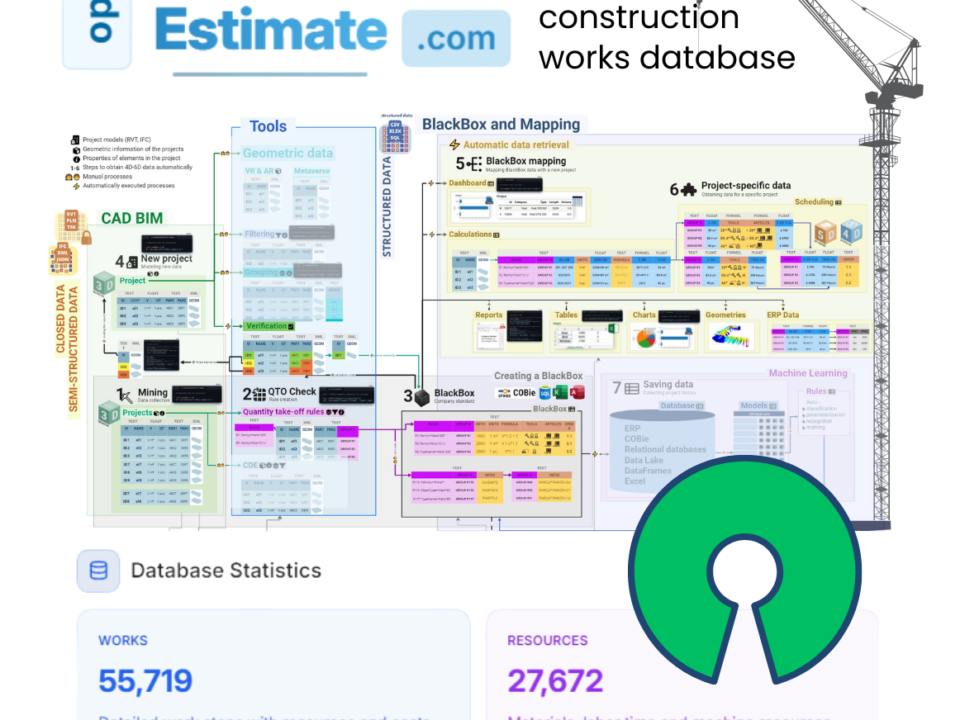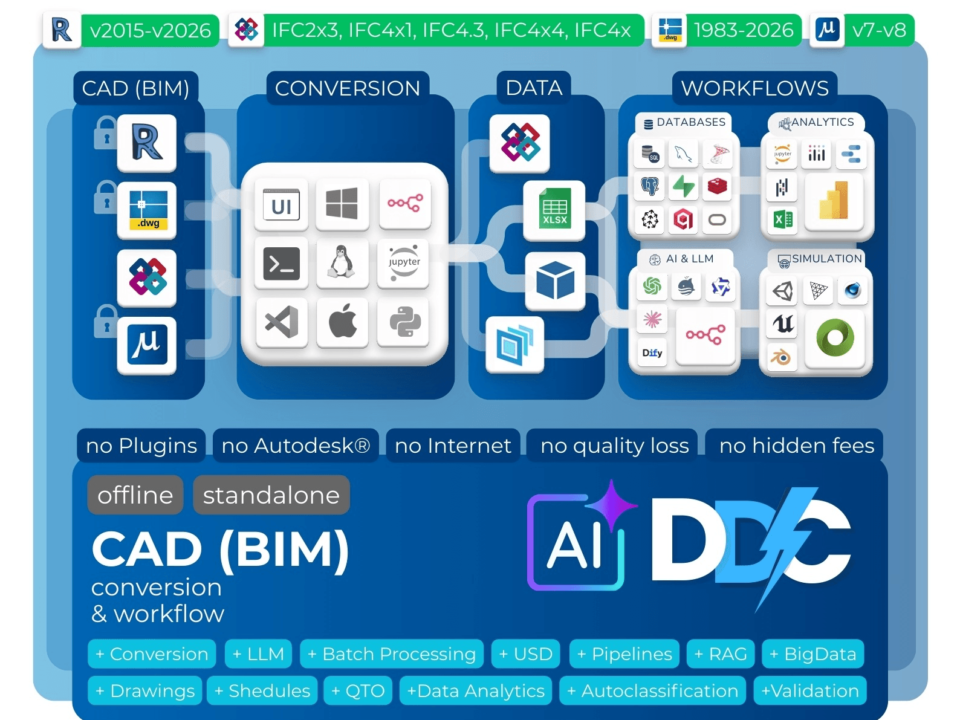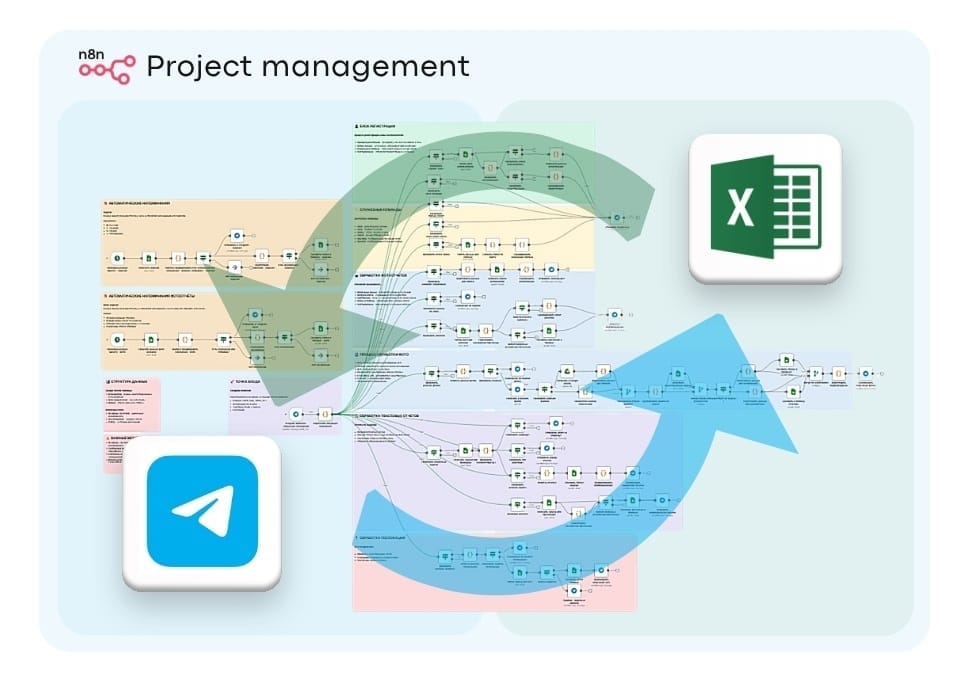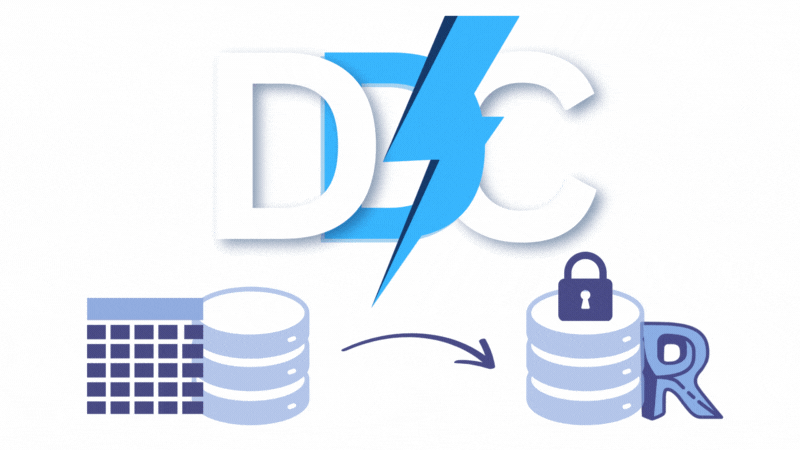Until 2022, I thought automation was only for large companies. But in 2022, I discovered n8n—and everything changed. Now, I automate routine work, reports, and even entire business processes—sometimes in under 30 minutes. Here’s how it works, what surprised me, and what you can try today.
We all have to manage dozens of disconnected programs and systems, with no seamless integration. The construction industry is literally drowning in a flood of new data: the volume of information has grown from 15 zettabytes in 2015 to 181 zettabytes in 2025, and 90% of all existing data has been created in just the last few years. Despite this explosion of information, most of it remains trapped in silos — isolated and useless unless automated processes are implemented to integrate and analyze it. Professionals feel this pain every day.
According to Deloitte (2016), the average construction professional uses 3.3 software applications daily, but only 1.7 of them are integrated with each other. By the mid-2020s, you may find hundreds (and, in large construction companies, thousands) of different systems that need to work in harmony to ensure all aspects of the construction process run smoothly and cohesively. (Source: Data Driven Construction: Navigating the Data Age in the Construction Industry, p. 13)
It’s the lack of integration that will eventually drive you to look for a better solution.
In 2022, I deployed n8n on a separate VPS to demonstrate how project data from CAD could be integrated and processed—similar to Dynamo or Grasshopper, but aimed at data managers and automation pipelines outside the CAD ecosystem. However, it was difficult to get experts interested back then: n8n was still in its early stages—there were no Python nodes, no LLM integration, and most workflows took weeks to create, relying on scattered blog posts and incomplete examples from forums.
Fast forward to 2025: everything has changed. Now, thanks to LLM nodes, you can simply ask ChatGPT, Claude, or any advanced AI assistant to generate n8n automation pipelines — whether for extracting tables from PDFs, validating parameters, or producing custom QTO tables — and get ready-to-run workflows in seconds.
Video Tutorial: Automate Your CAD-BIM Workflows Local with n8n + ChatGPT & Claude | No Code, No Plugins, No Internet
Why Bother with Automation?
Most “office work” (in my experience, CAD together with BIM makes up just 2–10% of it) is an endless loop of Email–Excel–PDF–Excel–PDF-Email, repeated every single day. Copy-pasting, renaming files, sending the same PDF or email template — over and over again. It's boring and, more importantly, it wastes hours every week. The root of this inefficiency runs deeper than just repetitive tasks.
A major challenge in using new technologies is that data, while abundant, remains fragmented, unstructured, and often incompatible between different systems and programs. (Source: Data Driven Construction: Navigating the Data Age in the Construction Industry, pp. 2-3)
In other words, the tools are there—but the data chaos keeps us stuck in manual routines. For a while, my solution since 2015 was to hack together automation scripts in Jupyter Notebook. But as soon as I discovered n8n, I realized automation could be much easier — and accessible to anyone, not just programmers. Once you automate your first task, you won’t want to go back.
What is n8n and Why Use It?
n8n (“n-eight-n”) is a free, open-source tool (from Berlin) for automating anything— file operations, notifications, emails, even AI tasks. No coding needed: you just drag, drop, connect blocks, and press play (like in Dynamo or Grasshopper). It runs on Windows, Mac, or Linux - offline and online. I set up my first workflow in under 30 minutes (Fig. 1).
n8n is open source, which means you’re not locked in to any one vendor. Any integration can be extended: if you need a node that doesn’t exist (there are already over 500 integrations, from WhatsApp and Teams to Google Calendar, OneDrive, and PostgreSQL), you can create your own in JavaScript or Python. As an open-source tool, n8n reduces costs compared to turnkey integration solutions. You can deploy the system on your own infrastructure, store data locally (which is essential for the corporate sector and GDPR compliance), and refine integrations without restrictions.
Getting Started: How to Start Your First Workflow on the n8n
Install Node.js (from the official site, takes 2 minutes)
Install n8n with a single command in CMD or in Powershell - npx n8n or npm n8n start
Open n8n in your browser (local or online)
Start building: drag blocks (“nodes”) to connect files, apps, add logic, or even call ChatGPT to write emails for you

Fig. 1: The n8n takes literally minutes to install and start up
Video Tutorial: n8n Quick Start: Easy Installation & Pipeline Creation (Templates and LLM): Full Beginner Tutorial
Where the Magic Happens: AI & Templates
The real game-changer (for me) was when n8n made it possible to connect directly to AI tools like Claude and ChatGPT — no coding required. Need to generate text, analyze data, or summarize messages? Just add a ChatGPT node, enter your prompt, and you’re done.
In addition to AI nodes, you can generate a ready-to-use n8n pipeline in just minutes using any modern AI. Claude 4, ChatGPT 4.1, and the new Grok 4 all handle the task of writing pipelines impressively well (Fig.2).
Simply ask in LLM Chat:
“I need to create a JSON pipeline to import into n8n. The process logic is as follows...”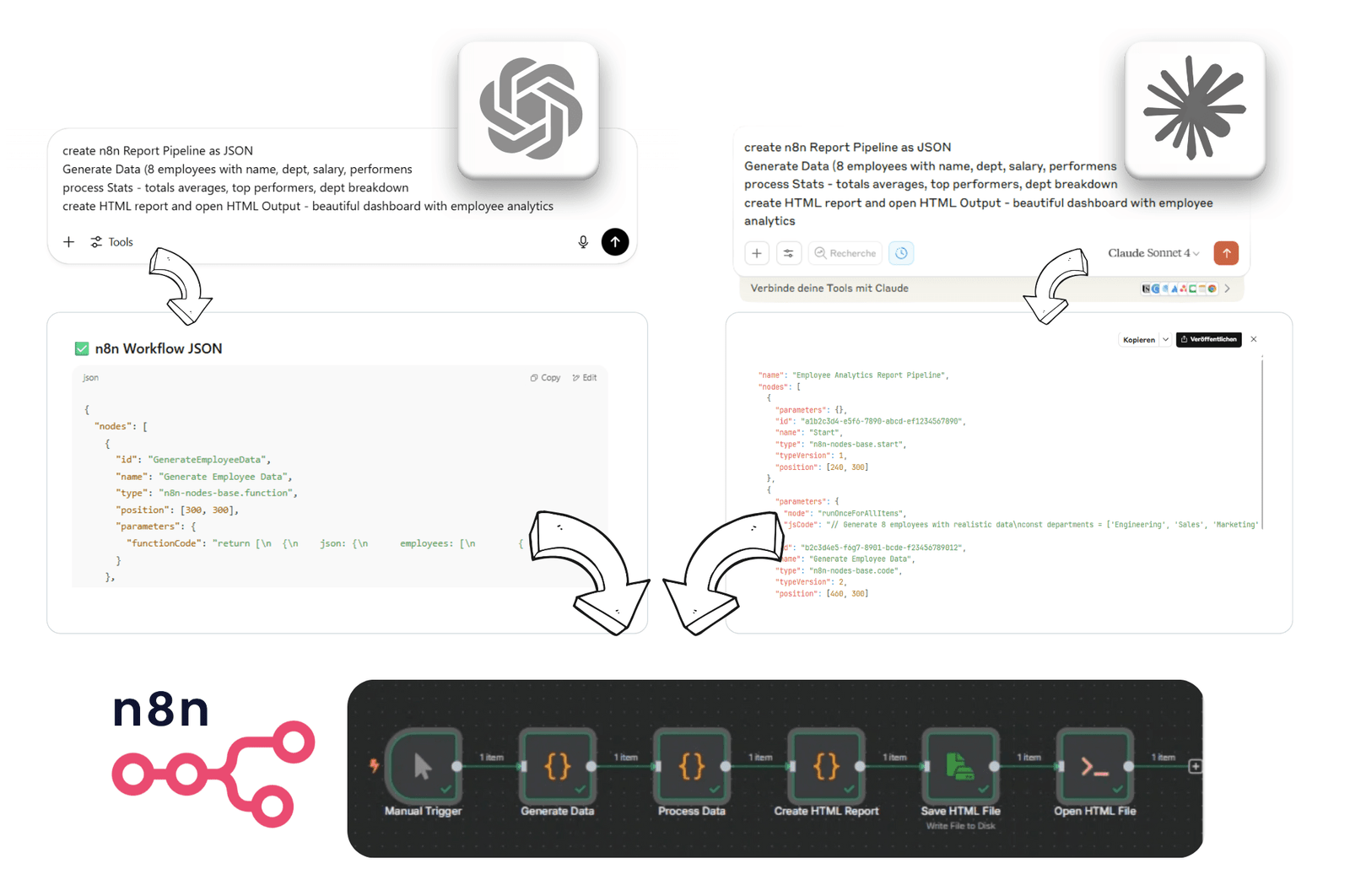
Fig.2: From a simple task description to a ready-to-use pipeline in tens of seconds
n8n also has a large library of ready-made templates on the official website (n8n -> “Templates”). You can find workflows for almost any need: document processing, cloud backup, chat with database, even complex stuff like BIM/CAD data processing. Take a template (as JSON or simple "Ctrl + C"), customize it to your needs (with LLM), and you're done.
Automation becomes a tool for everyone from the project manager and data manager to the estimator and design engineer, rather than a task for the IT department. Daily model reconciliation, data grouping and loading QTOs into documents or generating reports can now be set up in the LLM (Claude, Grok, ChatGPT or others) without calling a programmer.
Data from CAD, BIM, CAFM, ERP, Excel and clouds start to “speak the same language” - routine processes disappear, the human factor is minimized. And all this with a single line of nodes and without week-long integration projects.
My first automated workflow? Automating project reports, mostly related to data quality - collecting project data, formatting it (structuring and validation) and sending the finished report (Excel, PDF) via email, all triggered by a single button.
Real-World Examples: CAD/BIM Automation in n8n (Practical & Easy to Try)
A new generation of automation tools opens up opportunities for construction companies to dramatically improve efficiency without the need for major IT investments.
Try these ready-to-use pipelines—import a pipeline (JSON) in n8n, configure file paths, click play—and you’ll be automating CAD/BIM work processes that previously took days to complete - in a matter of minutes:
1. Basic Conversion: Revit/IFC/DWG/DGN → database of elements (.xlsx) + open geometry (.dae)
File: n8n_Revit_IFC_DWG_Conversation_simple.json
This workflow converts .rvt, .ifc, .dwg, or .dgn files into an database of elements (.xlsx-csv), exports 3D geometry (.dae) — no internet, no Autodesk, no manual export or plugin needed (Fig. 3).
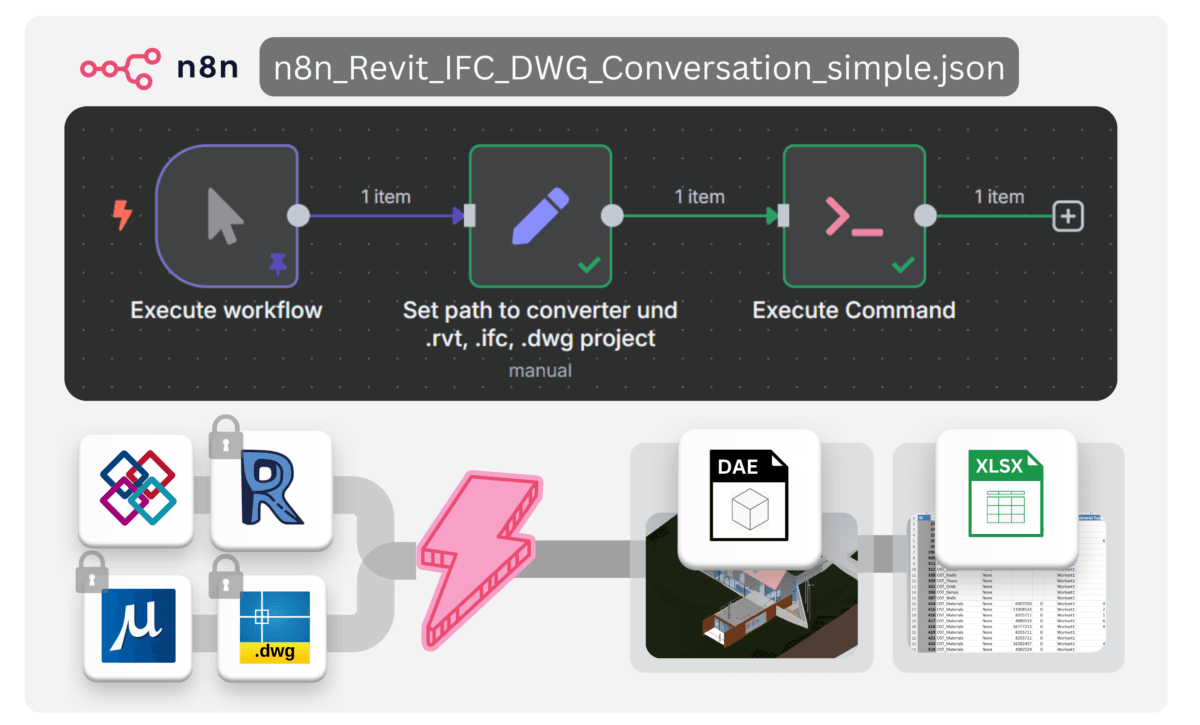
Fig. 3: Get data from closed formats and structure them in just one click
To try: Import the JSON file from the repo, set your converter executable paths and project file path, then hit Execute. For advanced exports, check out n8n_All_Settings_Revit_IFC_DWG_Conversation, which also lets you extract PDF drawings and Shedules from Revit and customize your output.
2. Validation: CAD/BIM Data Quality Check (Revit, AutoCAD, IFC, MicroStation)
File: n8n_Validation_CAD_BIM_Revit_IFC_DWG.json
This pipeline reads the CAD (BIM) data, checks for missing or incorrect parameters by group, type or other parameter (e.g., missing volume parameters or material codes), and produces a validation report that shows for each parameter the number of items in the group, the percent complete, and the unique values of the parameter. The process is fully aligned with common industry requirements and standards such as EIR, BEP, IDS and others (Fig. 4).

Fig. 4: Validating project data through requirements tables is unlikely to be even easier
Accelerates the data validation process and makes it fully automatic. Automatically identifies modeling problems (missing groups and parameters) before they turn into costly errors,. Try it: Download the workflow, update file paths and validation rules if necessary, and run it with a single click.
3. Quantity Takeoff & Report Generation
File: n8n_CAD_BIM_Quantity_TakeOff_HTML_Report_Generator.json
This automated workflow (completely created by several promts in Claude) calculates the volumetric parameters for one of the groups (in the example it is “OST_Walls”) from CAD-(BIM)-models and generates an HTML report - ideal for quick grouping, calculations or estimates (Fig. 5).
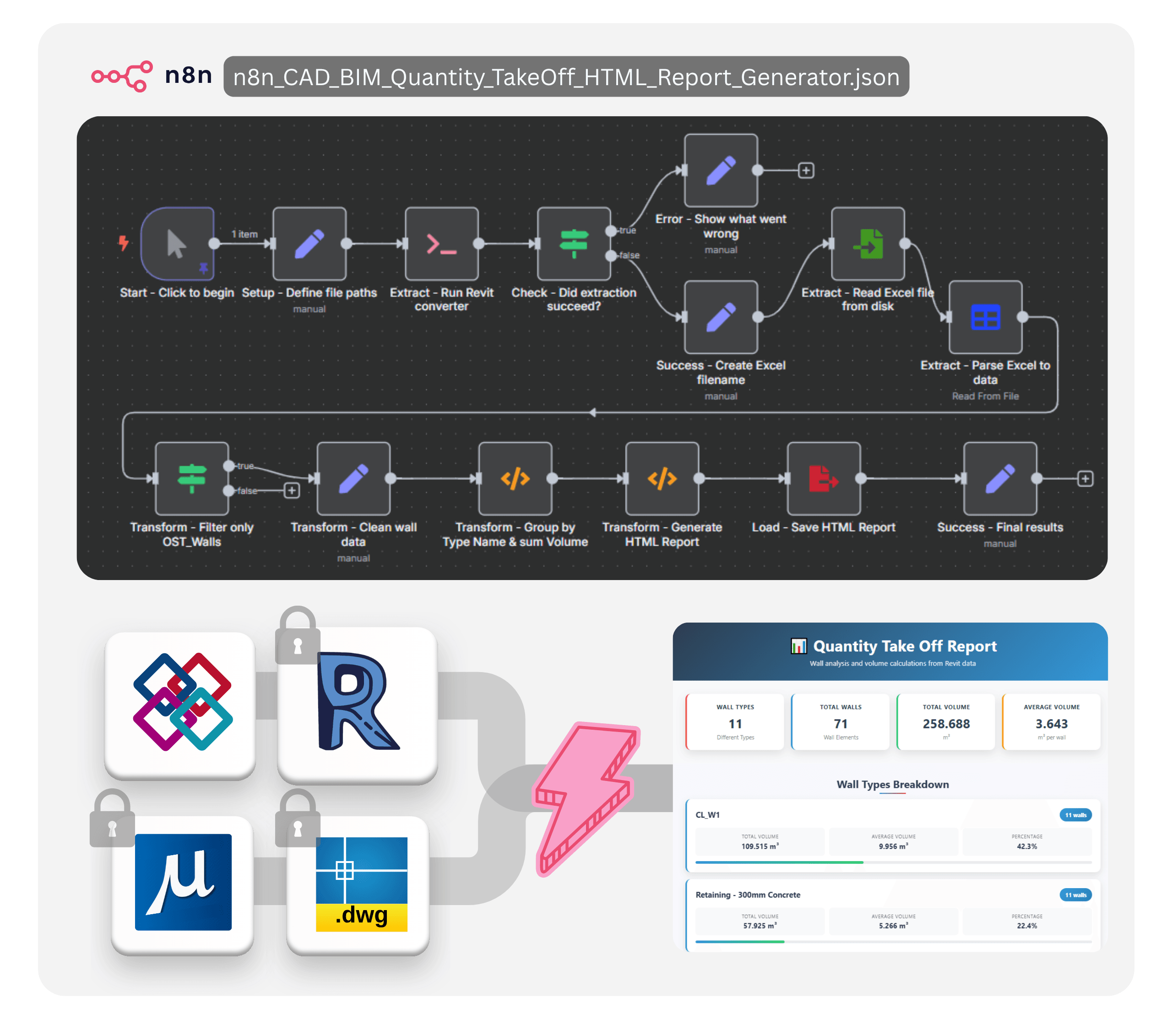
Fig. 5: Example of creating a quick dashboard and data showcase for a CAD (BIM) project
Automate your QTO process and get polished reports without manual intervention or external tools. To try: Import JSON, specify the source CAD/BIM file, specify the desired group and run to instantly generate a QTO report.
Why Pipelines Matter
All workflows run locally — no internet, cloud services, or CAD-BIM licenses needed, so you keep full control of your data. Outputs are structured (SQL, Excel, HTML, JSON), making further analytics or automation a breeze. And the best part: you can customize every step — with or without LLM — to perfectly fit your company’s needs.
Now, whether you've created a workflow using an LLM or chosen off-the-shelf automation templates, the next step is to run the pipeline and carefully analyze the results. This will allow you to iteratively tweak the process until you achieve the results you want with ChatGPT, Claude, Grok, or any other LLM (Fig. 6). Once the automation is successfully set up, you will be able to delegate routine n8n tasks, freeing up hours of your valuable time for more important work.
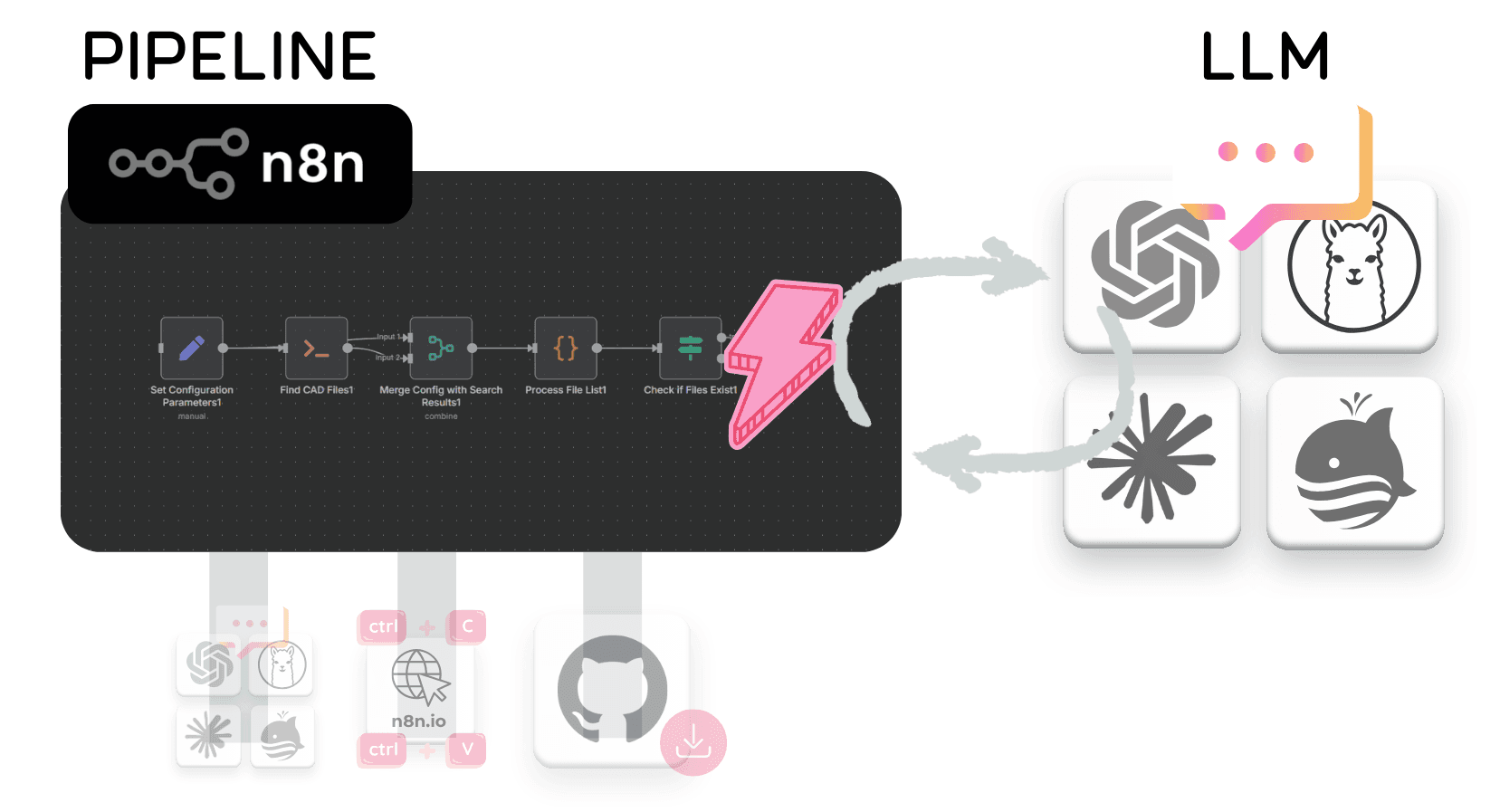
Fig. 6: Having created a ready-made pipeline, you only have to check the result and iteratively modify certain node
In 2024, the number of workflows (open source pipelines) published only in the n8n public marketplace will exceed 3,292. According to n8n itself, their user base doubles every 9-12 months.
Now you can not only download other people's scripts, but instantly share your own: “logic as a product” is a new market that is growing rapidly.
Automation is becoming “commoditized” - like websites 20 years ago
Automation is fast becoming a “commodity” - just as websites and content creation platforms were 20 years ago. In the mid-2000s, open source framework Joomla (later WordPress) turned websites and internet platforms from a luxury to a necessity: whereas in the early 2000s a programmer was required to create simple web platforms and designs, by the mid-2000s anyone could create them in just a couple of hours. The same thing is happening now with the automation of business processes thanks to tools like n8n. What used to take days of coding is now available to everyone, not just IT, and is often created in minutes by business users themselves.
My journey to this shift started in 2006 with web CMS systems, when I was building online stores and saw firsthand how the open source modular tool Joomla (WordPress and Drupal) with their huge plugin marketplace turned websites and platforms into something every company with even the smallest income could have. Websites became products rather than projects. Any business could get a website quickly and inexpensively, and a website was no longer a competitive advantage - it became “business hygiene,” a basic requirement for everyone.
The same revolution is happening now in automation (Fig. 7). Before the advent of modular, low-code platforms, workflows were created manually in Python, C# or macros in Excel - each new integration meant another custom script.
Now n8n lets you assemble workflows from pre-built building blocks: PDFs, Revit, AutoCAD, Outlook, Google Drive, Notion, Teams, WhatsApp, LLM, SQL databases, Python scripts, and more. You simply connect these nodes visually like building with Lego, creating seamless digital pipelines.
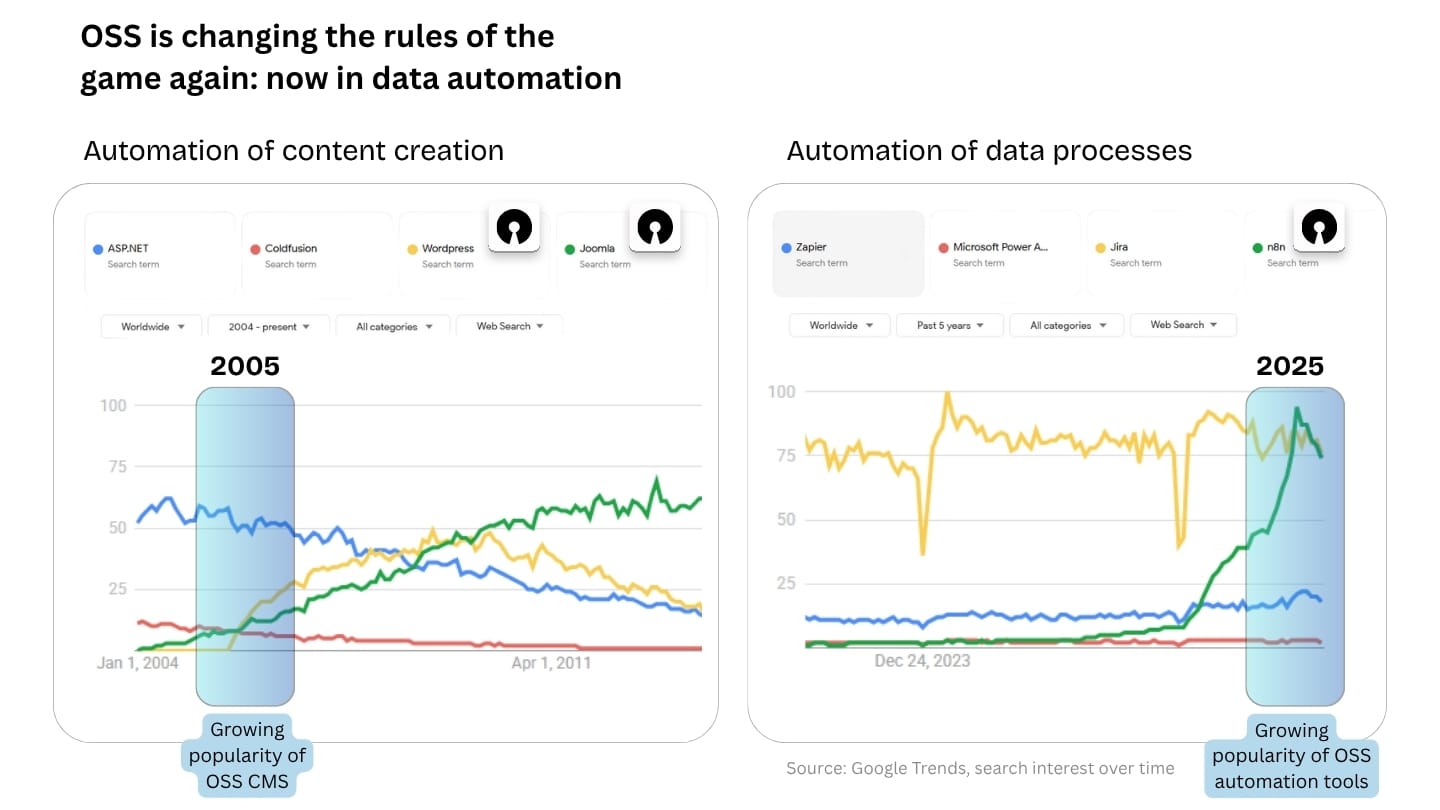
Fig. 7: Open Source (OSS) will change the rules of the game in working with data in the coming years, just as it did in content creation
Just as the entry barrier to website creation lowered in 2005 with the advent of Joomla and WordPress, today, starting in 2025, automation scenarios will no longer be the domain of IT departments alone. Business analysts and project managers can create automated systems themselves. Low-code platforms like n8n are transforming business operations by enabling rapid experimentation, instant scaling, and democratizing digital tools. Even a high school or college student from a small town (as I was in 2006 in web development) can now build automated systems for companies in their city without having deep programming knowledge.
This is the “WordPress effect” for construction and other industries: a growing library of ready-made “workflows” (templates stored on GitHub, the n8n website, or your own server) that any team can reuse, customize, and understand through a visual interface. Automation is no longer a competitive advantage - it's a basic, standard tool.
Automation is becoming a “commodity” - an affordable, mainstream, standard tool that everyone uses. Automation is no longer a competitive advantage, but simply “business hygiene.”
Just as websites and email became a must-have in 2010, seamless-automation will become a basic requirement in workflows by the end of the 2020s.
Lessons Learned since 2022 and Tips
Don’t overthink: Start simple. Even automating one small task (like downloading attachments from email, grouping some columns from Excel) pays off.
Debug as you go: n8n makes it easy to see where something breaks—just follow the logs, tweak (using Claude or ChatGPT - send screenshot, error text or incoming and outgoing in node ), and re-run.
Experiment: The community is active and shares real-life examples. Some of my best workflows came from GitHub repos or the official n8n library.
Combine tools: I use n8n with spreadsheets, databases, cloud storage, and AI. Everything connects!
Automation isn’t just for techies anymore. With tools like n8n, anyone can build and run real workflows—saving hours, reducing errors, and focusing on what really matters.If you haven't tried it yet — now is the perfect time to start.
Why You Should Try It
Business process automation is evolving from the status of "competitive advantage" to the category of "operational necessity".
According to a McKinsey Global Institute study, the construction industry remains one of the least digitized in the global economy, resulting in productivity losses of up to 20-30% of potential. For companies looking to stay ahead, this is both a warning and an opportunity. [Source: Data Driven Construction: Navigating the Data Age in the Construction Industry, introduction].
The n8n platform represents a new generation of automation tools that make complex integration projects accessible to companies of all sizes. For the construction industry, this means the ability to significantly improve operational efficiency without the need for major investments in IT infrastructure, while reducing dependence on closed solution vendors.
In an environment of increasing competition and shrinking margins, companies that are the first to capitalize on the potential of modular automation will see significant benefits in project speed, workflow quality and overall operational efficiency.
After just a few weeks of using these tools, you'll realize how much time you're saving. Reports that used to take you hours today will be completed in minutes. Integrations that seemed impossible - such as automatically sending QTO tables from BIM data directly into a spreadsheet and then via email - will suddenly become easy.
Automation isn’t just for techies anymore. With tools like n8n, anyone can build and run real workflows—saving hours, reducing errors, and focusing on what really matters.
Want to learn more about data, workflows, and the future of digital construction?
The book DataDrivenConstruction. Navigating the Data Age in the Construction Industry is available in 32 languages — read it in your native language. Discover practical insights, real-life automation cases, and the open data standards shaping tomorrow’s construction industry: 🔗 Read DataDrivenConstruction in your language
Want to discuss new automation pipelines, share your cases or get help? You can find more automation examples in the repository on GitHub or in our Telegram chat. Join our community for live discussions, tips and exclusive content.
Open data and formats will inevitably become a standard in the construction industry — it’s just a matter of time. This transition will be accelerated if we all spread the word about open formats, database access tools and SDKs for reverse engineering. Each and every one of you can help in this process.
♻️ If you find the information you read useful, please share it with your colleagues. If you’d like to keep up with new updates and articles, sign up for the newsletters on the DataDrivenConstruction website or subscribe on LinkedIn and Medium.
Join the Conversation: New Pipelines & Automation Use Cases in Telegram
Want to discuss new automation pipelines, share your use cases, or get help? Join our Telegram community for live discussions, tips, and exclusive content not covered in articles or videos:








